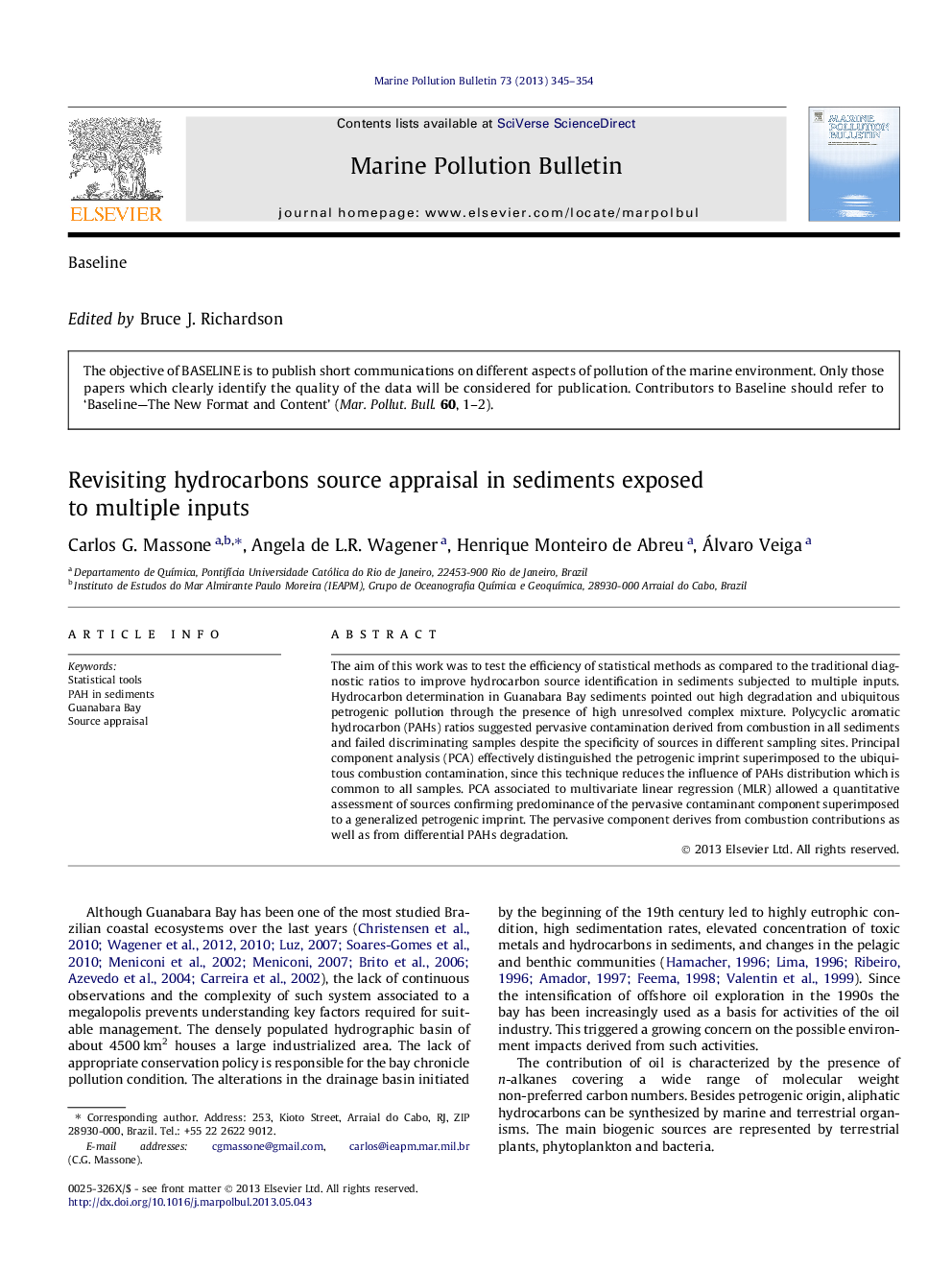| Article ID | Journal | Published Year | Pages | File Type |
|---|---|---|---|---|
| 6359477 | Marine Pollution Bulletin | 2013 | 10 Pages |
Abstract
The aim of this work was to test the efficiency of statistical methods as compared to the traditional diagnostic ratios to improve hydrocarbon source identification in sediments subjected to multiple inputs. Hydrocarbon determination in Guanabara Bay sediments pointed out high degradation and ubiquitous petrogenic pollution through the presence of high unresolved complex mixture. Polycyclic aromatic hydrocarbon (PAHs) ratios suggested pervasive contamination derived from combustion in all sediments and failed discriminating samples despite the specificity of sources in different sampling sites. Principal component analysis (PCA) effectively distinguished the petrogenic imprint superimposed to the ubiquitous combustion contamination, since this technique reduces the influence of PAHs distribution which is common to all samples. PCA associated to multivariate linear regression (MLR) allowed a quantitative assessment of sources confirming predominance of the pervasive contaminant component superimposed to a generalized petrogenic imprint. The pervasive component derives from combustion contributions as well as from differential PAHs degradation.
Keywords
Related Topics
Physical Sciences and Engineering
Earth and Planetary Sciences
Oceanography
Authors
Carlos G. Massone, Angela de L.R. Wagener, Henrique Monteiro de Abreu, Álvaro Veiga,
